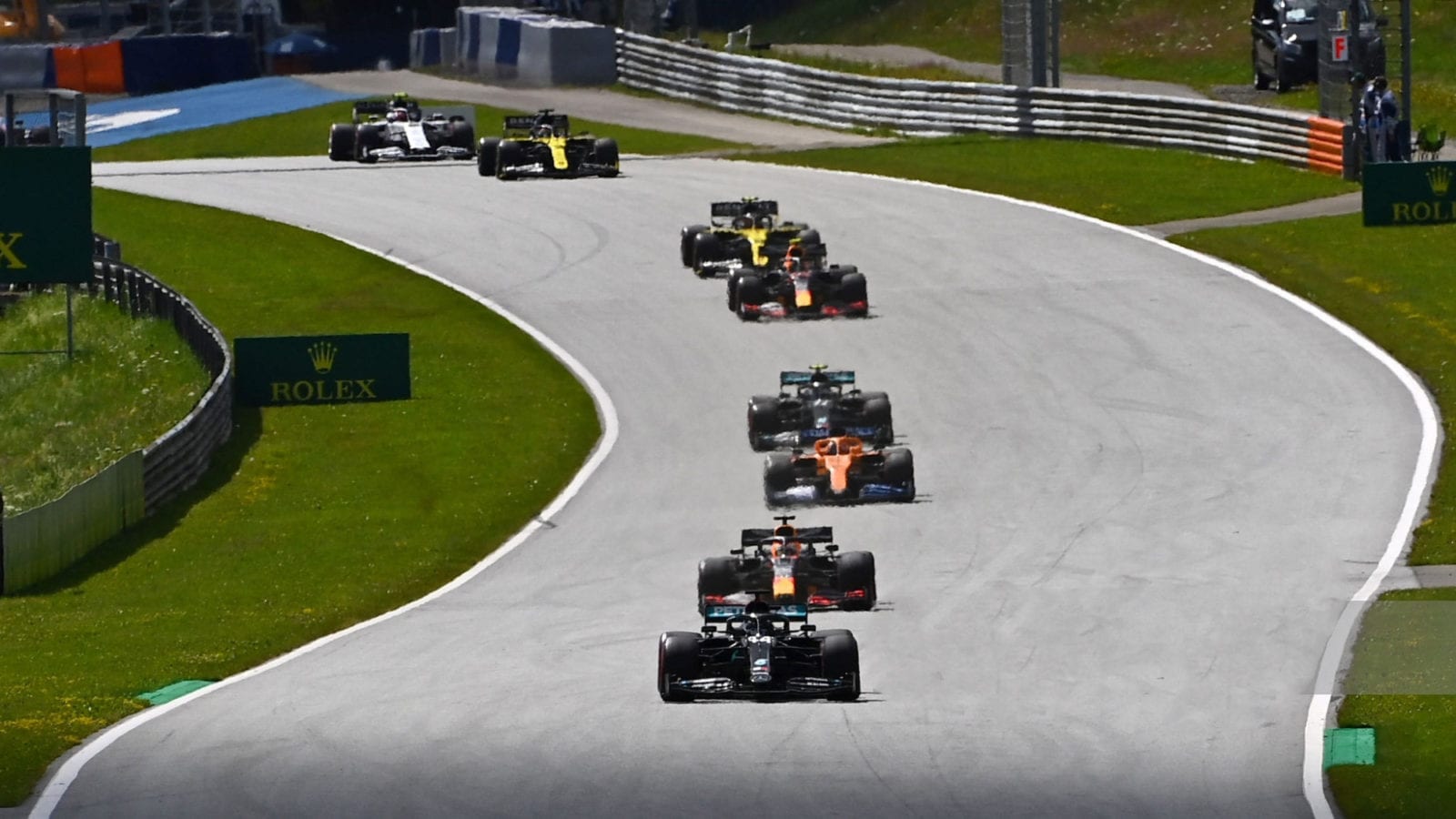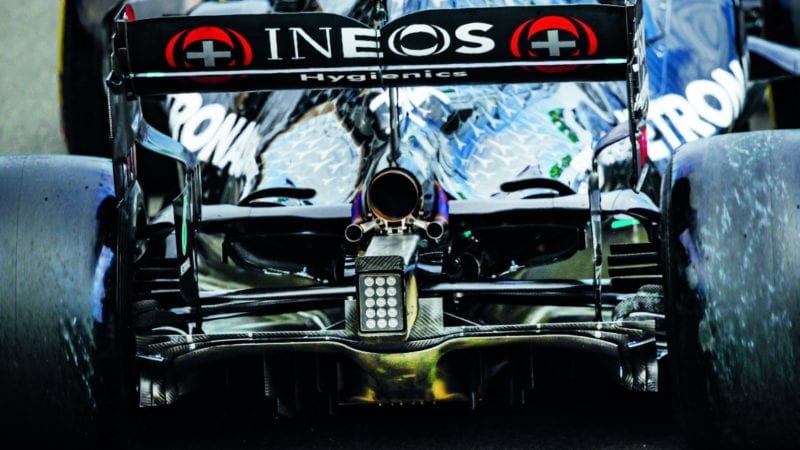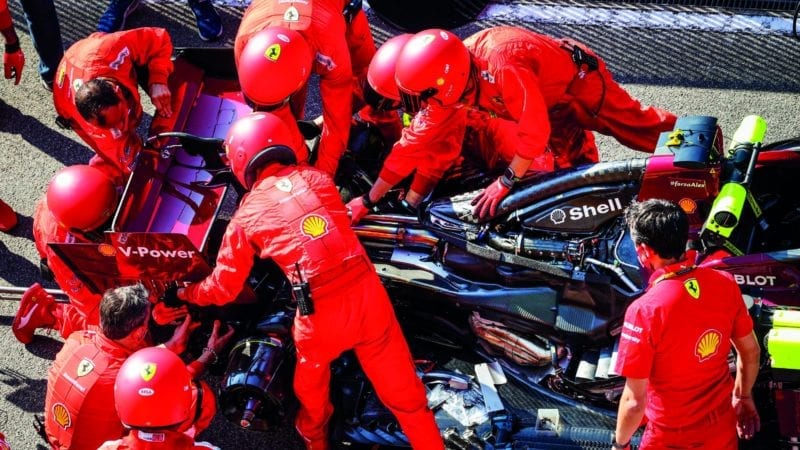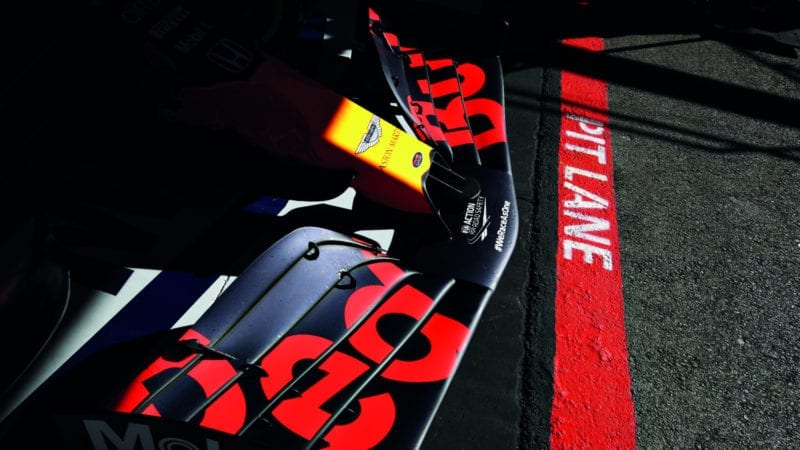How the fastest F1 cars ever got quicker in 2020
Grand prix cars became faster than ever last season, but who really excelled in finding this ultimate performance? Mark Hughes crunches the numbers to find out

Getty Images
Although F1’s competitive order has been rather more static than ideal over the last few seasons of Mercedes domination, there have been significant changes within the pack. Here, we look specifically at the losses and gains made by each team last season compared to 2019 – and the technical reasons driving those changes.
In the accompanying data the comparisons are taken from the seven tracks which overlap between the two seasons and at which the same tyre compounds were used in both years. On this basis, seven of the 10 teams were faster in 2020 than in ’19. The three which were slower were all Ferrari-powered, thereby highlighting perhaps the biggest story of last season: the swingeing performance penalty imposed upon the Ferrari power unit by the FIA’s technical directives.
Ferrari lost 0.65sec-worth of lap time and this was a very significant part of why Mercedes increased its advantage over the next-fastest from 0.15 to 0.7sec. But not the only one. Even referencing only itself, Mercedes made big gains with the W11. On the seven tracks at which comparison is possible, it was 0.44sec faster than its predecessor – and that gap is understated because, for the Merc at least, the Barcelona track was slower in the searing summer heat of the 2020 event than in the early spring of the 2019 race. Mercedes was even less able than usual to keep the softest tyre from overheating before the end of the qualifying laps.
So Merc continued to advance even as Ferrari was brought up short – and the effect was further amplified by the struggles of Red Bull in adopting a different aerodynamic philosophy, one which proved littered with booby traps. Ferrari’s sudden descent ensured Red Bull was the second-fastest, but it was significantly further adrift of Mercedes than in ’19 and its advantage over its own junior team (AlphaTauri, formerly known as Toro Rosso) shrank from 1.2 to 0.7sec in 2020.

Mercedes’ advantage over its main rivals increased. largely due to restrictions for Ferrari, which knocked the Scuderia for six during 2020
Getty Images
Racing Point, in abandoning the technical philosophy it had followed for the previous three years and instead simply copying the 2019 Mercedes W10, vaulted from the seventh-fastest car in 2019 to the third-fastest in 2020, with an average gain on these tracks of 1.3sec, by far the biggest jump in the field and leapfrogging it (on raw performance at least) past Renault and McLaren despite their improvements. McLaren’s stronger driver pairing – rather than raw pace – is what ultimately allowed it to pip Racing Point to third in the constructors’ championship.
Williams, with the same basic architecture as its disastrous 2019 car, achieved much more respectable performance in 2020 and was faster at all seven tracks and by an average of 1.1sec. This putting it marginally ahead of the two Ferrari-powered customer teams Haas and Alfa Romeo, albeit with the help of a power advantage over them in the order of 65bhp.
Here we take a closer look at the technical points driving these performances.
Mercedes rear suspension – the Hamilton-driven tweak
For the three seasons after the introduction of the wide-body 2017 regulations Lewis Hamilton was insisting that the longwheelbase, low-rake Mercedes, while delivering great downforce, did not give him the slow-corner alacrity he sought. If they could just give him a car which, in addition to that downforce in fast corners, could be aggressively pointed into slow corners without upsetting the rear, a car which could rotate early into the corner – then he’d find even more lap time from himself. Not only in raw qualifying speed, but in tyre usage in the race.
“I won’t say how much time it was worth… enough to have us testing last-minute”
“I’ve always preferred a more positive front end in the car,” he explains. “But there’s a limitation with these tyres. The front has a limitation, the rear has a limitation, grip wise. There’s saturation, there’s thermal deg and there’s only a certain amount you can do with the mechanical balance before it affects the other end. It’s like a see-saw. [In 2019] our car was definitely very, very strong at the rear and the car was generally driven by the rear end and the front was a lot more understeery. So you struggled a lot more when you went over the tyre and no matter how much we put the mechanical rearwards it wouldn’t really fix it.
“You can develop a set-up, but the tyres have a huge amount of time in them and how do you get all the potential out of them on a single lap but also in a long run? There are things the car does… both in set-up but also in the aero package [which determines] how you can look after the tyres.
“I applied a lot of pressure on the team in terms of where I want the aero balance. I have had them shift that since 2014. We have been shifting it bit by bit. The team will have a simulation that will tell you what the best car is, but it can’t do what I can do, and it doesn’t have that feeling.”
Having reached an apparent limit in generating rear downforce to support Hamilton’s preferred late and aggressive turn in, Mercedes thought out of the box in trying to accommodate what its lead driver was pushing for. The solution was radical – and a big engineering challenge. The rear lower wishbone would be fed not into the gearbox casing, as normal, but into the crash structure behind it. This would allow the whole rear suspension to be swept much further back, creating a big volume of airflow-enhancing space which could be used to increase the draw upon the diffuser, thereby increasing downforce, particularly at the rear end at low car speeds. It wasn’t an easy change – nor was it without risk.

A daring rear suspension change for Mercedes helped Hamilton unlock even more pace. Mercedes rear wishbone link now mounts to crash structure
“I’m not going to reveal how much lap time it was worth,” says technical director James Allison, “but enough for us still to be trying crash tests right at the 11th hour. Putting the wishbone where we put it meant the aft-most element is on the crash structure and that means [in the crash test] you need to have done all the stopping on the crash structure before you hit the hard point of that suspension link because that would definitely trigger you above the peak g. That means you have less space to stop it, so the crash has to be pretty much perfect. The crash has to jump instantly to the peak g the test permits and then it has to skirt along just below the peak g for the full length of the travel – so it’s like an almost perfect deceleration in order to fit in the space.
“But the crash test was only part of the structural difficulty. The [forward] wishbone legs go into the gearbox in places where the gearbox is not naturally strong so the ’box structure needed to be beefed up quite a lot to cope with the sub-optimal pickup point locations to make sure we got at the far side of it a nice driving characteristic that matched up with the behaviours we’ve had in the past.”
“Yeah, with the aero balance more rearwards the car was shifting different and also at different steering angles and different yaw – so it is definitely working a lot better,” smiles Hamilton.
Tech directives and their effect on Ferrari
Technical directives regarding fuel flow were introduced at Austin 2019, which specifically prohibited an interpretation rivals feared Ferrari may have been making to get around the power-defining maximum permitted flow. Ferrari’s under-declaring of its fuel level in Abu Dhabi 2019 could in theory have been a way of getting around the restrictions. The FIA investigated Ferrari’s 2019 power unit after the season ended and in addition to the second FIA fuel-flow sensor that had already been regulated, issued further technical directives. These concerned ways of measuring adherence to the fuel flow, oil burn and electrical power distribution. The combined effect of all this lost Ferrari in the region of 65bhp, taking it from the most powerful engine in 2019 to the least powerful in 2020. Concurrently Mercedes found around 25bhp. So Ferrari went from around 25bhp ahead of Mercedes in 2019 to 65bhp behind in 2020.
The power reduction wasn’t the sole cause of Ferrari being around 0.65sec slower than the year before, but it was the root one. The SF1000 differed from the 2019 car mainly in its sidepod design, with a total repackaging of components beneath the rear bodywork to enhance the car’s downforce, even at the usual expense of extra induced drag. Which would have been fine for the 2019 power levels, but was considerably too far biased towards downforce for the lower power of the 2020 power unit. So it had an inappropriate aero concept for the power it was actually obliged to run with.
Each track has a different lap time sensitivity to power and the teams calculate these. The straight loss of 65bhp on the seven tracks considered here would be expected to slow the car by an average of around 1.3sec. But the Ferrari was slower by only half that amount of time – confirming the team’s claims that it did have significantly higher downforce levels than the 2019 car.
Ferrari-powered Alfa Romeo did not significantly change the concept of its car into 2020 – and had almost certainly not been running the 2019 engine in a way that Ferrari was suspected of doing. Hence there is less performance loss between the two seasons (0.25 rather than 0.65sec). The Ferrari-powered 2020 Haas was starved of any development parts and hence its loss of performance from ’19 was considerable (at 0.62sec).

New FIA tech directives for 2020 cost Ferrari a total of 65bhp, plunging it down the order
DPPI
Aero booby traps at Red Bull
Red Bull switched from its traditional wide nose to the narrow-nose concept, which Mercedes has been using for years. It went to a lot of trouble to completely re-engineer the front of the car to minimise the nose width to an extreme degree, moving the steering gear and reservoirs behind the suspension. Since the 2019 restrictions on the permitted number of under-wing guide vanes, the narrow nose has probably been better in allowing the fashionable under-nose cape to turn the airflow to the barge boards. It enables the turning process to begin earlier and therefore with less risk of detachment. This will then allow the barge boards to do a better job in creating the vortices which are then used to accelerate the speed of the underfloor airflow (and thereby increase the downforce). But there are some perils attached, as Red Bull’s engineering chief Paul Monaghan explains. “The cape will produce a vortex, which, if you can work with it and keep it away from other vortices nearby, you can utilise to your advantage… If you can’t keep the vortices apart, or they become blended together, or worse, burst, then it is to your detriment.”

Red Bull switched tack to a narrow-nose, but had some challenges
Getty Images

